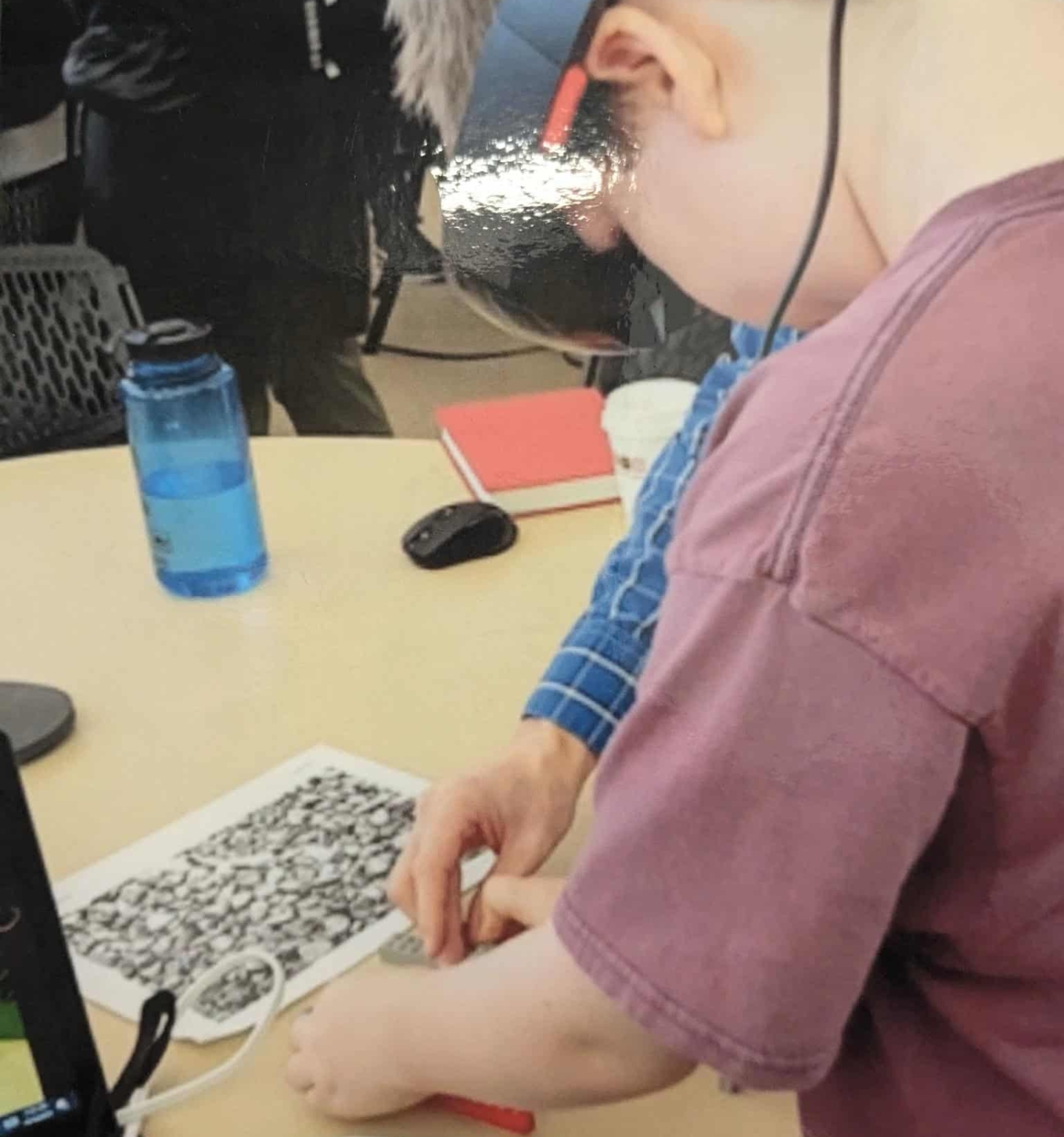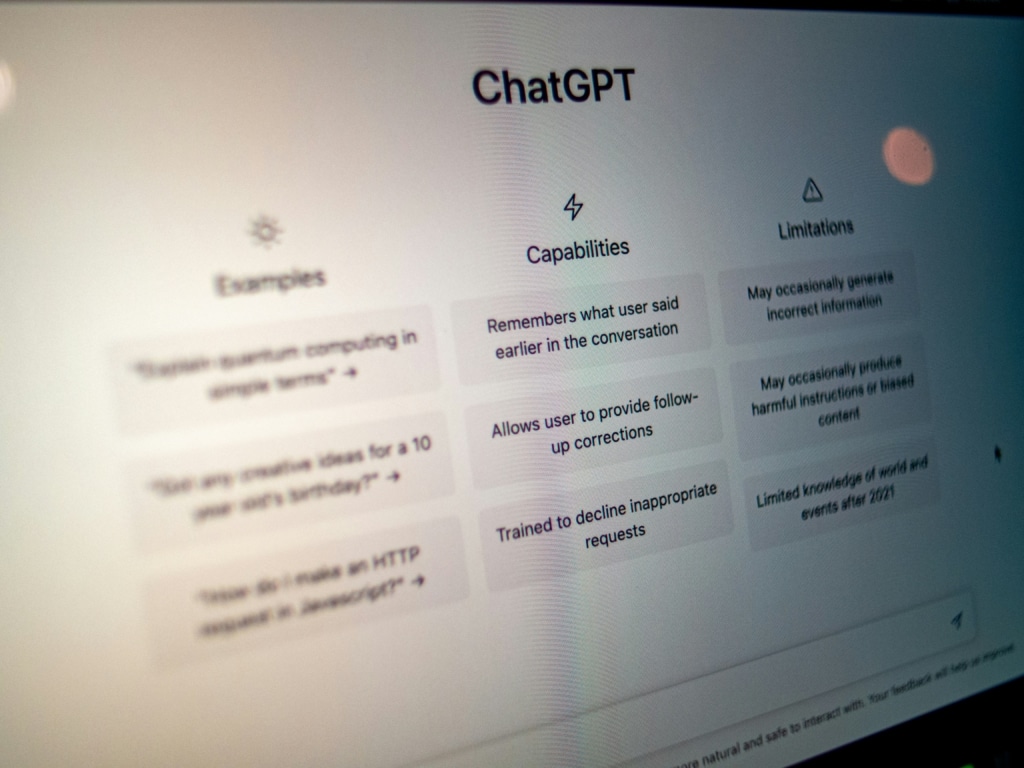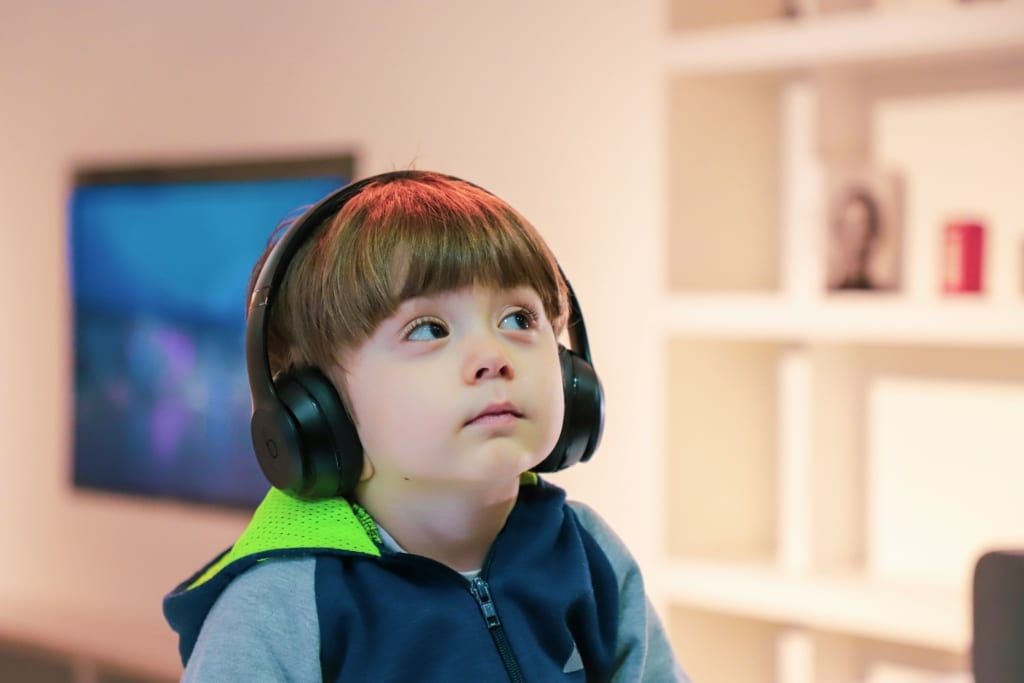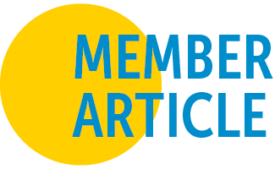Home/Resources/Early Development/Artificial Intelligence and the Early Childhood Field: Exploring Potential to Enhance Education, Communication and Inclusivity
Artificial Intelligence and the Early Childhood Field: Exploring Potential to Enhance Education, Communication and Inclusivity

Early childhood professionals can leverage AI to enhance their day-to-day work by using tools that streamline administrative tasks, improve individualized care, and offer data-driven insights. These tools can also help professionals track each child’s progress over time, generating real-time reports that guide decision-making and communication with families.
Particularly for neurodivergent children, AI can be a powerful tool. From speech and language development to social skills practice, AI-driven technologies are helping to create adaptive learning environments and assistive tools that cater to the unique challenges faced by children with autism, ADHD, and other neurodivergent conditions.
We spoke with Dr. Julie E. LeMoine to find out more about AI and what we can expect from future “digital helpers.”

Author
Julie E. LeMoine, PhD
Assistant Professor, Department of Psychology at UMass Chan Medical School & Director, NeuroInova Lab at the Eunice Kennedy Shriver Center
With over 35 years of experience in advanced technology, Dr. Julie E. LeMoine's research focuses on serious 3D gaming, AR, VR, and Generative AI. Dr. LeMoine's groundbreaking PhD work at University College Dublin created live AR helpers for autistic teens, offering insights for Autism, Alzheimer’s, and cognitive diversities.
She has collaborated with over 20 organizations to help them with serious gaming, AR, VR and advance collaboration strategies across various industries and to date has co-founded five software start-ups.
Recognized as a top woman in VR and one of the top women to watch in technology, Dr. LeMoine's early career included pioneering work in global computer security networking, helping to establish a secure Internet and improving the security on other national projects. Dr. LeMoine is passionate about how applied advanced technology can improve wellbeing for all.
Before we dive into your background and work, could you start by giving us a simple, layperson’s explanation of artificial intelligence (AI)?
Artificial intelligence is about software and computer systems that solve problems, make decisions, and interpret information. While that might sound like any software, the "intelligence" part is key.
Think of AI-based software as being capable of some level of independent thinking. Human thinking is remarkable—creative and innovative. Until AI, we were mainly using computers to do tasks we already knew how to do, just faster, more precisely, more conveniently, and cheaper. For instance, computers can perform tasks that would normally require a large team of highly skilled people to complete in a short amount of time. While these tasks may be impossible for humans to do as quickly or efficiently as computers, there are still humans who understand every step involved.
AI, however, is different. It’s capable of learning—from you, from research, from other software, from what it observes in nature, or even via camera input. AI can discover new patterns, methods, and concepts that our best software developers or experts might not have envisioned yet.
In reality, AI has been around in various forms for decades. The recent buzz is because of a branch called generative AI. As the name suggests, generative AI creates—it generates new ideas, images, summaries, and more based on what it believes is true or useful. This is a key point: GenAI functions like a very smart research assistant or friend, responding to your requests with what it thinks is most accurate or helpful. Underneath, there’s a lot of prediction happening. So, like a highly knowledgeable expert, GenAI generates its best response, often drawing from billions of data points. It can make mistakes and may have biases, but it’s astonishingly accurate most of the time—it amazes me daily.
Generative AI has gained prominence due to what I call the “democratization of access and utility.” This kind of democratization has occurred several times in the tech world since the 1980s, with the rise of personal computers, the internet, the web, smartphones, and cloud computing—which powers our social media. I’d also add the advent of multi-user game engines and now, GenAI. Until recently, GenAI was only accessible to the smartest scientists and wealthiest companies and took years to master. Now, anyone with a smartphone, laptop, or tablet and internet access can use it. If you’ve tried ChatGPT or Copilot, you’ve already used GenAI.
In reality, AI has been around in various forms for decades. The recent buzz is because of a branch called generative AI.
julie lemoine
As the name suggests, generative AI creates—it generates new ideas, images, summaries, and more based on what it believes is true or useful. This is a key point: GenAI functions like a very smart research assistant or friend, responding to your requests with what it thinks is most accurate or helpful. Underneath, there’s a lot of prediction happening. So, like a highly knowledgeable expert, GenAI generates its best response, often drawing from billions of data points. It can make mistakes and may have biases, but it’s astonishingly accurate most of the time—it amazes me daily.
Generative AI has gained prominence due to what I call the “democratization of access and utility.” This kind of democratization has occurred several times in the tech world since the 1980s, with the rise of personal computers, the internet, the web, smartphones, and cloud computing—which powers our social media. I’d also add the advent of multi-user game engines and now, GenAI. Until recently, GenAI was only accessible to the smartest scientists and wealthiest companies and took years to master. Now, anyone with a smartphone, laptop, or tablet and internet access can use it. If you’ve tried ChatGPT or Copilot, you’ve already used GenAI.

Can you walk us through some of the key experiences and pivotal moments in your professional journey that sparked your passion for AI?
I’ve worked with AI for many years. My first experience with AI was as a technology fellow at Fidelity Investments, where I worked on an early chatbot system using natural language processing (NLP).
I’ve worked with AI for many years. My first experience with AI was as a technology fellow at Fidelity Investments, where I worked on an early chatbot system using natural language processing (NLP) AI. Those tools were vastly different from what we have today, but my current research using GenAI with 3D avatars still relies heavily on NLP capabilities.
I began to see the potential of AI as I delved deeper into the field of serious gaming, particularly multi-user serious games. While many were focused on recreational multi-user gaming in the early 2000s, I was exploring its use for global teams, distance learning, remote consulting, and supporting the neurodiverse. During that time, I started experimenting with incorporating adaptable, pre-designed, mostly human-like 3D characteristics into these experiences. My users embodied these avatars to navigate and engage with others and the environment’s services. My work also focused on making this as easy as using your computer keyboard and mouse. This was the beginning of my work in digital helpers, and by 2008, I was already deeply involved in that area.
It’s worth noting that by 2008, I had over 20 years of experience in advanced technology after earning my undergraduate degree in computer science, so I wasn’t new to innovation. I’m also proud to have been one of the many contributors to the development of the Internet. In 2022, I earned my PhD, focusing on co-designing digital helpers for autistic teens and young adults. Really, from 2008 onward, my focus has been on the serious use of collaboration tools, 2D and 3D games, avatars, and more. This work has culminated in my current research with multi-agent AI systems and 3D digital helpers.
What AI innovations for neurodivergent toddlers and young children currently exist?
Speech and Language Development Tools:
AI-driven speech recognition and natural language processing (NLP) technologies, such as speech-to-text applications, can help children with speech delays or language difficulties. Tools like speech therapy apps are increasingly using AI to create personalized exercises and track progress over time.
AI-based conversational agents, such as virtual assistants or apps, can encourage interaction in children who may struggle with traditional social settings. These tools provide a non-judgmental, consistent environment for practicing communication.
Assistive Learning Apps:
AI-powered educational apps can tailor learning experiences to suit individual needs. For neurodivergent children, this might mean adjusting the pace, content, or sensory stimuli to minimize overwhelm and match their unique learning preferences.
Gamified AI tools that provide visual, auditory, or tactile feedback can support children with autism or ADHD by keeping them engaged in learning activities that reinforce executive functioning skills, attention, or sensory integration.
Behavior Tracking and Early Diagnosis:
AI can assist in identifying early signs of neurodivergence by analyzing behavior patterns through digital tools. For example, apps using machine learning can observe speech patterns, motor skills, or social interactions and provide early feedback to caregivers and clinicians.
Wearable devices with AI algorithms can monitor physiological signals (e.g., heart rate, movement) and behaviors to predict potential meltdowns or sensory overloads, providing an opportunity for timely intervention.
Augmentative and Alternative Communication (AAC) Tools:
AI-enhanced AAC devices offer non-verbal children an efficient way to communicate. These tools use predictive text, image-based communication boards, and advanced machine learning algorithms to better understand and anticipate a child’s needs or preferences.
What work do you do now related to AI helpers? What are you most excited about advancing?
The potential positive impact on our health and well-being by combining avatars and GenAI is limitless.
Since I focus on inclusive design—which means creating solutions everyone can use—I’m especially excited that we now have the processing power to make digital helpers that meet the user interface needs and preferences of nearly any individual. Co-designing your own helper was at the core of my PhD research, and GenAI is making it far more feasible to turn that research into a practical capability.
There are three things I’m most excited about. First, it’s thrilling to see people with no technical background getting creative with GenAI tools like GPT or Copilot. That’s just incredibly exciting. Second, I love combining GenAI and avatars to do good, and the pipeline of tools to make this happen is becoming more viable and affordable. I used to be a rocket scientist, but now you don’t have to be one to do this kind of work.
And, to get a little nerdy, the third thing that excites me is multi-GenAI agent systems. Frameworks are emerging that make it easier for software engineers to manage GenAI agents that collaborate to complete tasks. It’s a game changer—this will allow more developers to create useful systems that help everyone. This goes beyond just making GenAI tools accessible to end users; it’s about accelerating the creation of even more useful tools. It’s a triple win right now—so exciting!

What results/impact are you studying and/or seeing?
I consider myself an "early-edge technovator"—someone who deeply understands technology and pushes it into areas where progress is needed, often five years ahead of when it’s fully possible.
I’m starting to see reactions to my 2017-2021 research evolve into “oh wow, okay.” I’m authoring papers to raise awareness of what’s possible in this space and working hard to secure funding and grants to bring these visions to life, especially for those most in need.
In 2019, I envisioned how to co-create uniquely personal helpers, delivered through something as simple as a pair of smart glasses or a smartphone, for an autistic young adult who needs assistance with time management or social skills, in real time, when they need it. Now I can build it. I also see the potential to build a helper that provides companionship and compassion all day to someone affected by Alzheimer’s, especially when their loved ones are at work, or their caregivers are attending to others.
What could future AI innovations for neurodivergent toddlers and young children look like?
Personalized Virtual Therapists:
In the future, AI could create hyper-personalized virtual therapists that continuously learn from a child’s responses and adjust therapeutic techniques in real-time. This could assist in providing consistent behavioral interventions, even in areas where access to in-person therapists is limited.
Advanced Sensory Tools:
AI could integrate with sensory technology to create customized environments for neurodivergent children or children with sensory processing differences. For example, AI-driven systems might adapt lighting, sound, and textures in a room based on the child’s immediate responses to stimuli, creating a calming or stimulating environment as needed.
AI-Enhanced Robotics for Social Skills:
Robots powered by AI could be designed to help neurodivergent children practice social cues and emotional recognition in a safe, structured environment. These robots could adjust their responses to mirror the developmental needs of the child, helping them learn and model appropriate behaviors in a way that is less stressful than interacting with peers.
Predictive Behavioral Analytics:
In the future, AI could analyze a child’s behavioral patterns, using vast datasets, to better predict stressors or triggers that might lead to challenging behaviors. This predictive power could guide parents, educators, or caregivers in proactively managing a child’s environment to prevent meltdowns or anxiety.
AI for Augmented Reality (AR) and Virtual Reality (VR) Therapy:
Future AI could be combined with AR or VR to create immersive therapeutic environments tailored for neurodivergent children. These environments could simulate real-life situations (e.g., visiting a store, interacting with peers) but allow the child to practice at their own pace and receive real-time guidance from AI algorithms.
AI-Enhanced Social and Emotional Learning (SEL):
AI tools could assist in monitoring and guiding social and emotional learning by analyzing facial expressions, body language, and voice tones during interactions, offering real-time feedback and tailored guidance on how to improve emotional recognition and regulation.
Are you investigating or involved in bringing AI into the early childhood field? What might we see in the future?
Yes, I’m working on how AI helpers can aid families and medical professionals who assist children who are neurodiverse.
I see three parts to the question, “What might we anticipate in the future?” The first is: how might GenAI start emerging within early childhood education and related early childhood disciplines?
I believe the most significant positive impact will be GenAI’s ability to provide real-time advice to educators in natural language. While personalized learning plans are often discussed, imagine GenAI responding to an educator’s question—perhaps through an unobtrusive device like an earbud—in near real-time. It could offer recommendations based on the child’s behavior, current observations, past notes, and progress reports. GenAI could suggest specific activities, teaching methods, and immediate options.
In some of my current research, we’re exploring how to send a summary document to a designated email or folder or update an existing plan that the educator is managing. Speech-to-text interfaces and GenAI responses are becoming faster and more accurate, with reduced delays. You should see some of my recent prototyping work! Teachers will soon have these GenAI assistants at their fingertips.
Even today’s tools, like ChatGPT or commercial versions such as Microsoft’s Copilot, can assist the early childhood field. For example, in family or parent communications, professionals could ask ChatGPT to help craft an email with a particular tone or to describe an issue, then ask it to ensure the email avoids assigning blame. Or they could ask it to suggest ways to make the email actionable. To be clear, I’m not suggesting ChatGPT should be used as a subject matter expert, but rather as a helpful editor for the expert. These tools are still relatively new, so it’s important to remember they aren’t always accurate.
That said, these tools are impressive—they can generate draft plans for almost anything, which is incredibly useful for educators and other early childhood professionals. You can be specific in your requests, and the current tools will generate a draft that’s surprisingly close to what you need, whether it’s an educational plan for a child or a professional development plan. While they’re never entirely accurate, if educators and their colleagues understand that they are the experts, GenAI can serve as a great starting point for creating a draft plan.
Even today’s tools, like ChatGPT or commercial versions such as Microsoft’s Copilot, can assist the early childhood field. For example, in family or parent communications, professionals could ask ChatGPT to help craft an email with a particular tone or to describe an issue, then ask it to ensure the email avoids assigning blame.
julie lemoine

The second part of what we might anticipate in the future is personal: What will I be doing with GenAI that’s relevant to the early childhood field?
I’m focusing my research on assistive uses of GenAI, not just for teaching and training but also to help address everyday challenges for children and their care ecosystem. While I work in learning, I am also continuing my research focus on assistive uses that address immediate, reactive needs in daily situations. This is a core area of my research. We are all unique, and everyone can benefit from help with everyday challenges.
Our children are the future of everything we do on this Earth and, as we head toward… Mars—maybe within the next 20 years—they’ll be at the heart of it all. You can expect me to apply everything I can from GenAI and avatars to support neurodiverse individuals and contribute to the greater good.
Finally, the third part of what early childhood might anticipate in the future comes from the perspective of the AI field.
In short, AI is booming, especially with the rise of GenAI. We should expect to create with it, learn from it, and teach it. Neural interfaces are on the horizon, and we need to be incredibly careful with ethics as we begin to connect our thinking directly to GenAI. GenAI will enable breakthroughs, including personalized medicine and targeted support. I also believe it will help alleviate the mental health professional shortage, making care more accessible for those in need.
Tips for early childhood educators on how to communicate with parents.
How would you recommend early childhood professionals stay current on potential benefits from AI innovations?
I would recommend early childhood professionals start by using AI tools in a meaningful way. Engage with them for practical purposes, not just for entertainment.
I would recommend early childhood professionals start by using AI tools in a meaningful way. Engage with them for practical purposes, not just for entertainment. Become proficient in prompting. Consider taking a class on this, ideally from an expert. I offer a hands-on workshop called “Power Prompting,” where I teach professionals how to effectively use these tools. It’s truly inspiring to see the excitement this generates. One essential takeaway is to treat these tools like a smart friend—always verify sources and remember that your expertise is still crucial. While these tools are already highly useful for early childhood professionals, it’s important not to rely on them as the final answer.
I would also emphasize the importance of ethics. GenAI is still biased, makes mistakes, and has a long way to go before it can be fully trusted. Good people are working on these issues, but in a world where agendas often obscure the truth, it is important to remain cautious. Be sure to understand the protections available to you and follow any guidance your IT team provides to stay secure. Like social media tools, many AI tools learn from the input you provide, which is beneficial, but it is crucial to remain mindful of your intellectual property and any obligations you have to protect your employer’s assets.
I hope each of you goes out and tries GenAI today. Get your coffee or tea and a friend if that helps and try it out. Don’t hang back, it is right on your computer, whether its OpenAI, Copilot or some other end-user tool. I promise it will delight you today and help you tomorrow.

Next Up
Go to Next Resource
virtual-event
Behavior Strategies for Children with Autism: Supporting Social-Emotional SkillsPresented by Merle Crawford, M.S., OTR/L, and Barbara Weber, M.S., CCC-SLP Podcast: Listen on-the-go! ZERO TO THREE · Behavior Strategies For Children With Autism: Supporting Social-Emotional Skills Note: You can download for later use on your computer and on your mobile device. Download this episode on your computer On mobile, download the Podbean app and subscribe to the “ZERO TO THREE Member Podcasts” […]

